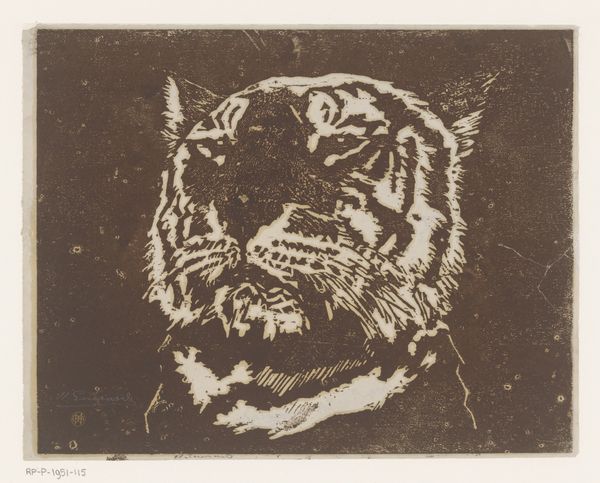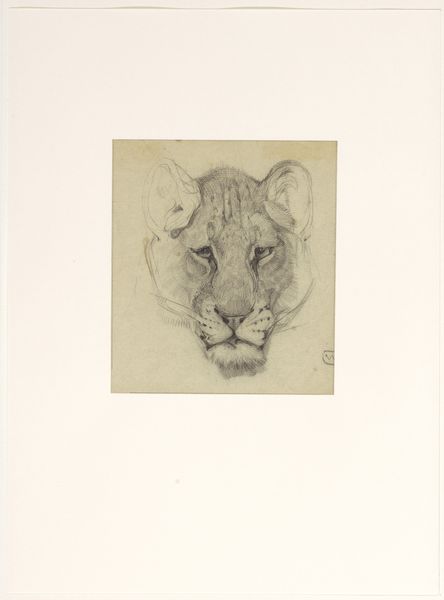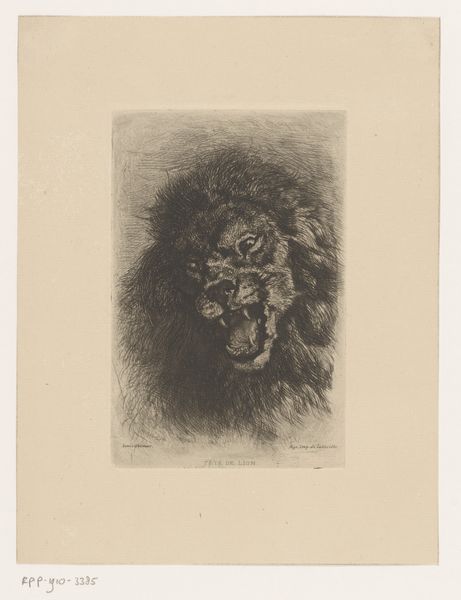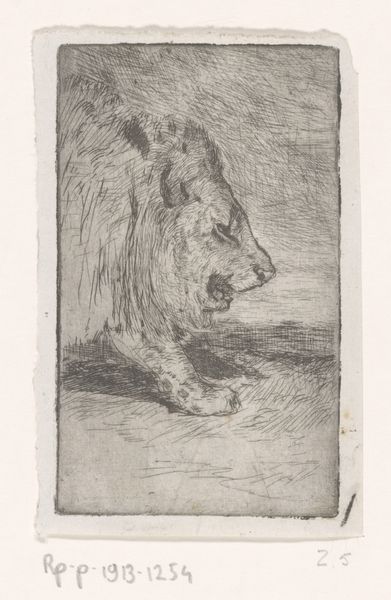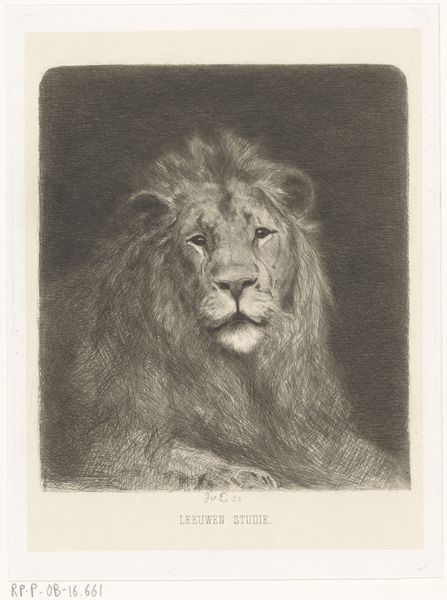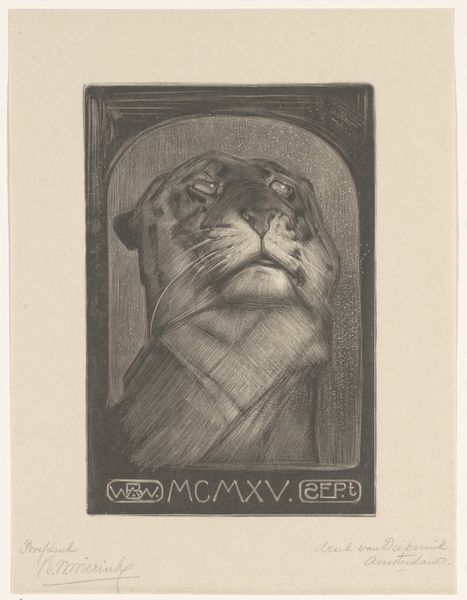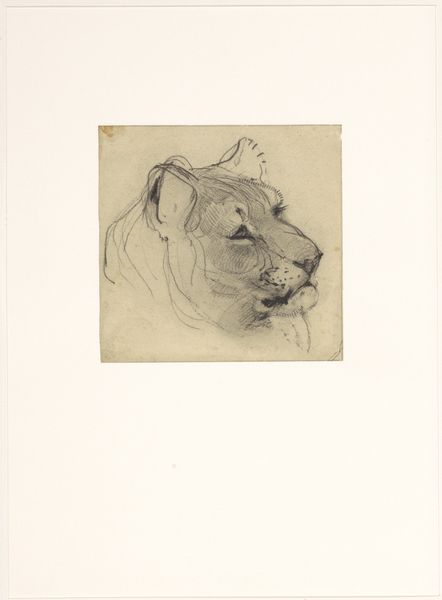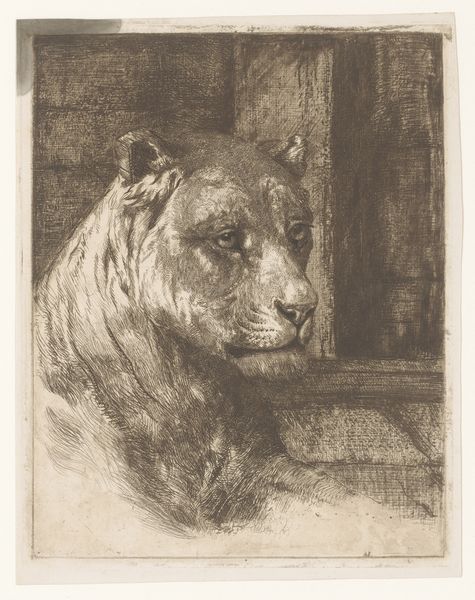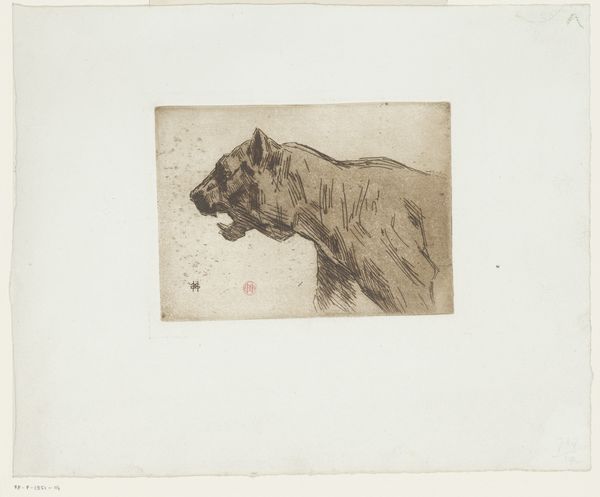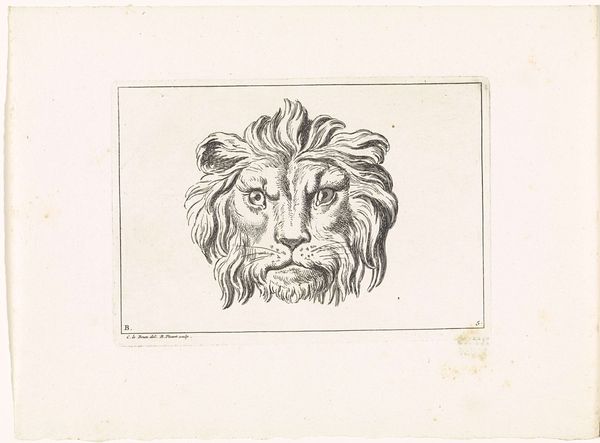
print, woodcut
#
portrait
#
animal
# print
#
woodcut
Dimensions: height 103 mm, width 85 mm
Copyright: Rijks Museum: Open Domain
Curator: What a striking piece! We're looking at "Kop van een leeuwin," or "Head of a Lioness," a woodcut print from the Rijksmuseum's collection by Bernard Willem Wierink. It's dated sometime between 1866 and 1939. Editor: I'm immediately drawn to the starkness of the image, the bold contrast of black and white. It feels very direct, almost confrontational in its simplicity. You can practically feel the grain of the wood. Curator: That's a great observation. Wierink's choice of the woodcut technique speaks volumes. Think about the labor involved, the removal of material, the inherent roughness. This wasn’t some quick sketch; this was deliberate subtraction. The image is, in a sense, what’s *left* after the artist’s intervention. Editor: And the framed image. It appears deliberate. That kind of conscious framing is telling; I see it in light of how animal representation shifted across the 19th century. Where does this print fit within changing socio-political roles for animals at that time? I'd want to explore that. Curator: Precisely! The popular press and burgeoning public museums played a large role. But let's consider the print medium itself. It would have made the image widely accessible and available for distribution. The contrast also seems crucial given technological changes in printmaking from photography to print magazines. Editor: Absolutely. These prints became affordable decorations and circulated within very specific visual cultures of the day, shaping public perceptions. Looking at the social impact – how this particular lioness engaged with anxieties, ideas of colonial power or perhaps nature's own raw power. The lioness head motif held powerful associations with nature and colonial themes. Curator: And it goes beyond mere image. We must analyze how Wierink made decisions at the point of production: the conscious choices with respect to labor that produced this artifact with the social purpose. It's not just an image of a lioness; it’s a trace of a creative process embedded in its time. Editor: A lot to think about regarding the piece, especially how this fierce but beautiful animal was rendered through social dynamics and the labor within printmaking technologies of the late 19th century! Curator: Yes, it shows how a particular moment can tell you as much through a print as a painting when it concerns labor and materiality.
Comments
No comments
Be the first to comment and join the conversation on the ultimate creative platform.


